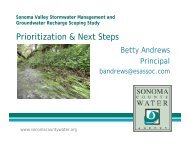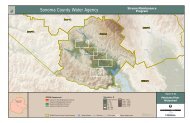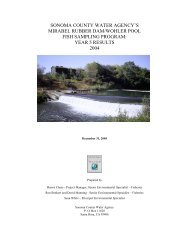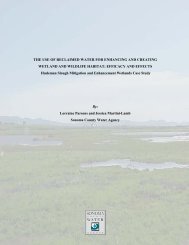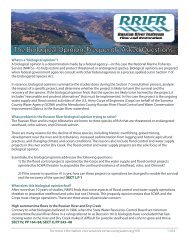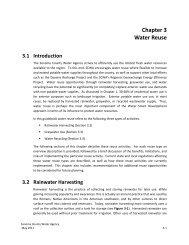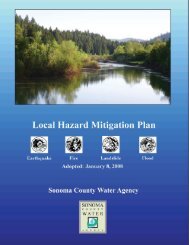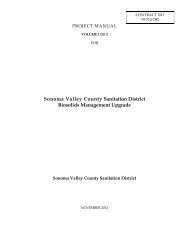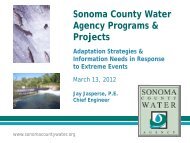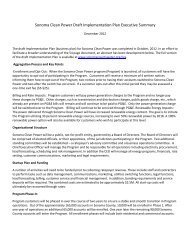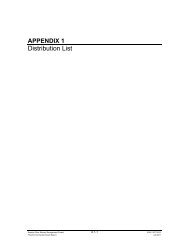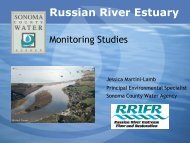Hydrography of the Russian River Estuary - Sonoma County Water ...
Hydrography of the Russian River Estuary - Sonoma County Water ...
Hydrography of the Russian River Estuary - Sonoma County Water ...
Create successful ePaper yourself
Turn your PDF publications into a flip-book with our unique Google optimized e-Paper software.
Figure 3.37. <strong>Estuary</strong> bathymetry from 10m x 10m grid. Segments used for salt balance<br />
calculations and associated CTD station locations are shown.<br />
The change in salinity during <strong>the</strong> September-October closure is shown Figure 3.38. In<br />
general <strong>the</strong> outer estuary loses salt and <strong>the</strong> inner estuary gains salt, resulting from <strong>the</strong><br />
baroclinic forcing that moves excess salt from near <strong>the</strong> mouth and redistributes it so that<br />
isopycnals are level. The pivot point between decrease and increase in salinity is 5 km<br />
from <strong>the</strong> mouth, over a long shallow ridge between Willow Creek and Sheephouse<br />
Creek. The depth <strong>of</strong> strongest change is near <strong>the</strong> pycnocline depth, so that much <strong>of</strong> <strong>the</strong><br />
observed change may be due to relaxation <strong>of</strong> <strong>the</strong> tilt in <strong>the</strong> halocline after closure. The<br />
increase in salinity observed in <strong>the</strong> outer estuary on 15 September is presumably a<br />
result <strong>of</strong> <strong>the</strong> wave overwash event between 12 and 14 September, with some <strong>of</strong> <strong>the</strong><br />
intruding seawater mixing into <strong>the</strong> pycnocline and spreading landward at this depth.<br />
56




